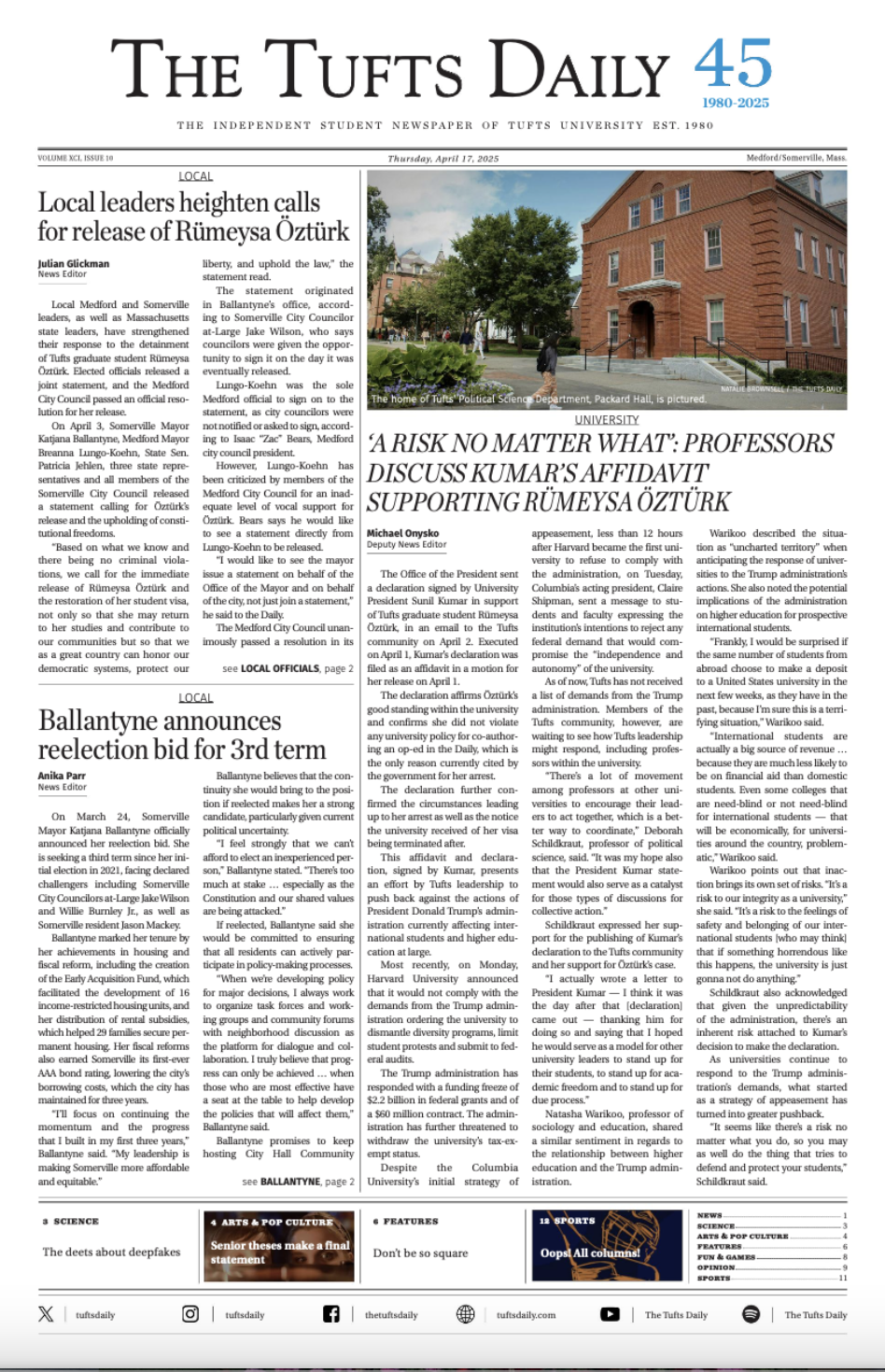Mathematician Jeffrey Weeks led an introductory-level tutorial last night on a not-so-elementary concept: four-dimensional shapes.
In the second talk of his three-part Norbert Wiener Lecture Series this week, Weeks discussed the nuances of the fourth dimension and the concept of space-time for an attentive audience in Braker Hall.
Weeks' lecture, "Visualizing Four Dimensions," approached the fourth dimension from the introductory level. Asking that "only people not possessing a Ph.D. in mathematics" respond to his questions, the MacArthur Fellow took on the difficulties of visualizing a four-dimensional world from our perspective as three-dimensional beings.
Weeks said the best way to deal with four dimensions is to drop down a level. He used the model of two-dimensional figures, or "flatlanders," living in a three-dimensional world as a device to help people approach the fourth dimension.
He drew two-dimensional stick figures standing next to a cube. "They use their regular intuition for X and Y coordinates," he said, but for the vertical Z coordinates, they use a "rainbow's worth of color." Weeks filled the cube with colorful slices of squares in a method known as color coding.
While the flatlanders only saw a line, he said, the colorful square slices extended out either way from the flat plane on which they stood to create one face of the cube.
He applied this color-coding method when explaining how to visualize a four-dimensional hypercube. He asked members of the audience to point out the location of the hypercube's vertices, edges and faces and their respective colors.
"This is the joy of the method, to just kind of look," he said.
Weeks said that color coding is the first step in seeing these complex objects naturally.
"Color coding is a crutch to get you started in visualizing the fourth dimension," he said. Once students have had experience with four-dimensional objects, they would ideally no longer need to use the color system.
Weeks introduced new jargon to more accurately describe the four-dimensional realm. "English has words for left and right and up and down," he said. "But when you want to talk about the fourth dimension, you're at a loss for words." Ana and kata, he said, are the terms for describing positive and negative movement in the fourth dimension.
Weeks went on to discuss the applications of the fourth dimension to space-time. He suggested that time is not as linear as we perceive it, but it is a collection of moments stacked together in one continuum.
"Try to free yourself from the confines of a 3-D slice and think in 4-D," Weeks said. "Integrate the past and future into the same mental image."
Weeks ended his lecture with a short question-and-answer session.
The Department of Mathematics brought Weeks, the author of "The Shape of Space," (1985) to Tufts as part of the Wiener Lecture Series, a yearly event held in honor of Norbert Wiener (A '09), who founded the field of cybernetics.
Senior Elizabeth Gibbons, a math major, was struck by the perplexity of Weeks' ideas, despite the accessible manner of his lecture. "This is a great way to really stretch your mind," she said. "It's not something you understand right away. It's just an eye-opener to get a different perspective and think in a different way."
Mary Caddle, a graduate student studying math education, said she enjoyed Weeks' methods of visualization. "I really loved the idea of the color coding," she said.
"This is just crazy," she said. "But I love the idea of … trying to see it, practicing it and coming back around. It becomes more natural to visualize."
Weeks will focus on spherical spaces in his third Wiener lecture, which will be held at noon today in Pearson Hall.
More from The Tufts Daily





